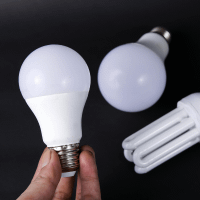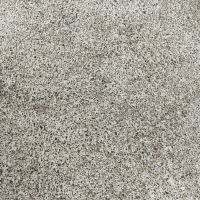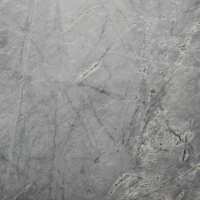Introduction
Both materials offer distinct advantages and limitations when comparing epoxy and polyurethane finishes, making the choice dependent on specific application requirements. Epoxy finishes are known for their rigidity and excellent adhesion properties, while polyurethane finishes are valued for their flexibility and impact resistance. The integration of these materials can enhance their individual properties, leading to improved performance in various applications.
Mechanical and Chemical Properties
Epoxy is widely recognised for its exceptional mechanical and chemical properties, making it a popular choice in various industrial applications. Its strong adhesion capabilities and rigidity are advantageous in contexts where a solid bond is essential for structural integrity. Consequently, epoxy is commonly utilised in sectors such as construction, automotive, and electronics, where reliable performance under specific conditions is required. However, it is essential to note that epoxy comes with inherent limitations. Specifically, its brittleness poses a challenge in applications subjected to mechanical stress, as it is prone to cracking and failure when subjected to impacts or vibration. This brittleness and poor crack resistance can restrict its usability in environments where flexibility and toughness are needed, potentially leading to premature degradation or frequent repairs. This limitation underscores the need for meticulous consideration when selecting epoxy for specific applications, particularly those that require durability under changing conditions (Kausar, 2017).
On the other hand, polyurethane is a remarkably versatile alternative, offering numerous advantages that make it an ideal choice for demanding applications. Its superior flexibility allows it to absorb impacts without sustaining damage, enhancing its overall durability. This flexibility, combined with impressive impact resistance, enables polyurethane to withstand various stresses that might otherwise compromise the integrity of more brittle materials like epoxy. Moreover, polyurethane exhibits excellent wear resistance, making it suitable for high-traffic areas and environments that experience significant physical contact. In addition to its mechanical benefits, polyurethane is also notable for its reduced water absorption properties. This characteristic is crucial, as it helps mitigate blanching or cracking when materials are exposed to moisture or other external forces. Such resilience contributes to the longevity of products made from polyurethane, making it a preferred option in industries where durability and performance are paramount (Wenwen, 2019).
Thermal Stability and Toughness
Epoxy resins are well-regarded for their excellent thermal stability, making them suitable for various applications that require heat resistance. However, one significant downside of epoxy resins is their inherent brittleness, which can limit their utility in scenarios that demand flexibility and impact resistance. To address this limitation, recent advancements have focused on modifying epoxy formulations. A notable modification involves incorporating epoxy-terminated polyurethane into the resin mixture. This addition has been shown to improve both the toughness and elongation at the break of the epoxy resins. Crucially, this enhancement does not come at the expense of the resin’s thermal stability, allowing for a more versatile material that retains its heat-resistant properties while gaining improved mechanical performance (Zhang et al., 2023).
On the other hand, polyurethane is a polymer recognised for its good thermal stability. Polyurethane’s versatility is further amplified by the creation of interpenetrating polymer networks when combined with epoxy. This technique not only helps to enhance the mechanical properties of the resulting composite materials but also significantly boosts their thermal resistance. Forming such complex networks allows for a more resilient material that can withstand higher temperatures and mechanical stresses, ultimately expanding the application range of polyurethane and epoxy in various industrial sectors (Kausar, 2017).
Application and Performance
Epoxy-polyurethane composites represent a significant advancement in material science by merging the unique properties of epoxy resins with those of polyurethane polymers. This strategic combination results in a crosslinked network that enhances the mechanical and physical properties of the final product. The synergy between these materials yields several advantages, particularly in fabric applications. Specifically, this composite formulation demonstrates improved resistance to wrinkling, making it ideal for textiles that require durability and longevity in appearance. Additionally, the hydrophobic nature of this composite enhances water repellency, allowing fabrics to maintain their integrity even in wet conditions. Strength is notably increased, contributing to a more robust material that can withstand various stresses during use. Furthermore, colour fastness is greatly improved, which means that fabrics maintain their vivid hues and do not fade when subjected to washing or rubbing over time, as evidenced by the research conducted by Zhang et al. in 2022.
On the other hand, developing Renewable Resource-Based Polyurethanes offers an innovative approach to environmentally friendly material solutions. Renewable resources, such as the Jatropha curcas plant’s seeds, have been shown to yield coatings with commendable performance characteristics when producing epoxy-polyurethanes. These bio-based polyurethanes support sustainability efforts and possess qualities that can be highly beneficial in various applications. However, it is essential to note that certain limitations are associated with these materials. Specifically, it has been observed that at higher loadings of isocyanate, the solvent resistance of these bio-derived polyurethanes may diminish. This finding, highlighted by Akintayo in 2013, underscores the need to carefully consider formulation parameters when balancing environmental benefits with performance characteristics in practical applications.
Conclusion
In conclusion, epoxy materials are widely recognised for their remarkable adhesion properties and ability to create a rigid, sturdy bond. This makes them highly effective for various applications that demand strength and stability. However, it is essential to note that epoxy can exhibit brittleness, which may become a limitation in situations requiring some degree of flexibility. On the other hand, polyurethane presents a viable alternative characterised by its inherent flexibility and excellent impact resistance. These attributes contribute to a more durable finish that can withstand varying stresses and strains without compromising the integrity of the material.
When deciding between epoxy and polyurethane, it is crucial to consider the specific requirements of the intended application. Factors such as the environmental conditions, the nature of the materials being bonded, and the expected levels of wear and tear should all play a significant role in this decision-making process. Additionally, hybrid systems that combine the strengths of both epoxy and polyurethane can provide a well-rounded solution, yielding a product that capitalises on each material’s advantages while mitigating their shortcomings.
Ultimately, by thoroughly evaluating the unique properties of epoxy versus polyurethane in relation to the demands of the project at hand, professionals can make an informed choice that aligns with the desired outcome and performance criteria. This understanding of the unique properties of these materials empowers professionals to effectively select the most appropriate solution for their specific needs.






